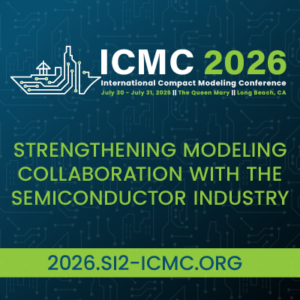
On July 18, 2025, Serge Nicoleau from STMicroelectronics delivered a compelling presentation at DACtv, as seen in the YouTube video exploring how artificial intelligence (AI) is revolutionizing semiconductor design, edge computing, and sustainability. Addressing a diverse audience, Serge highlighted AI’s pervasive integration across industries and its critical role in enhancing R&D processes, optimizing edge devices, and addressing global challenges like climate change through innovative chip design.
Serge began by illustrating AI’s ubiquity, from autonomous vehicles navigating San Francisco streets to NASA’s Mars rovers and AI-driven non-player characters in gaming. These applications, enabled by semiconductor advancements, mimic human capabilities like sensing, acting, connecting, and processing. Sensors (e.g., accelerometers, gyroscopes) and actuators bridge the physical and digital worlds, with microcontrollers (MCUs) and microprocessors (MPUs) processing data either locally or in data centers. AI augments this bridge by learning from data in the cloud and deploying trained algorithms at the edge, where data is generated, enhancing efficiency and responsiveness.
The computing pyramid, as Serge described, illustrates the scale of AI deployment: thousands of data centers, millions of edge gateways, and billions of tiny edge devices. Edge AI, particularly in microelectromechanical systems (MEMS), is pivotal. For instance, a six-axis inertial measurement unit (IMU) with an embedded digital signal core runs machine learning algorithms to manage system wake-up intelligently, preserving battery life in wearables. More complex intelligent sensor processing units (ISPUs) integrate multiple chips in a single package, enabling sophisticated AI algorithms for tasks like anomaly detection, crucial for IoT and automotive applications.
In semiconductor design, AI accelerates R&D by streamlining analog and digital design flows. Analog design, traditionally labor-intensive, benefits from AI-driven automation in schematic creation and layout optimization, reducing design time. Digital design leverages AI for tasks like power estimation and verification, enhancing efficiency. Serge emphasized STMicroelectronics’ AI-powered eco-design approach, which includes a comprehensive checklist to ensure sustainable products. This involves reducing power consumption, minimizing manufacturing footprints, enabling green technologies (e.g., efficient wind or solar farms), and prioritizing human well-being through applications like healthcare wearables.
Sustainability is a core focus, with AI enabling chips that optimize energy use and support ecological technologies. For example, AI-driven sensors in smart grids enhance energy efficiency, while edge devices reduce data transmission to the cloud, lowering carbon footprints. Serge underscored the semiconductor industry’s role in combating climate change, noting that innovative chip architectures are essential for sustainable solutions.
Addressing an audience question from a UIC researcher about AI in academic chip prototyping with limited resources, Serge drew parallels with healthcare, where 25% of new molecules are AI-selected. He suggested federated learning as a solution, where local models are trained on sensitive or limited datasets (e.g., chip design points or synthetic data) without sharing raw data, protecting intellectual property. These models are aggregated at a higher level to enhance performance, enabling academia to leverage collective data while maintaining privacy. This approach, gaining traction in healthcare, could revolutionize semiconductor research by pooling resources across institutions.
Serge concluded by emphasizing AI’s omnipresence, likening it to personal assistants like Alexa or Siri, and its critical role in edge and data center computing. The semiconductor industry, he argued, is at the heart of this transformation, driving novel chip architectures and sustainable practices. As AI proliferates, it demands collaborative innovation to address data privacy, computational constraints, and environmental challenges, positioning the industry as a key player in shaping a sustainable, AI-driven future.
Also Read:
From Atoms to Tokens: Semiconductor Supply Chain Evolution
The Future of Mobility: Insights from Steve Greenfield
Chip Agent: Revolutionizing Chip Design with Agentic AI
Share this post via:







Quantum Computing Technologies and Challenges